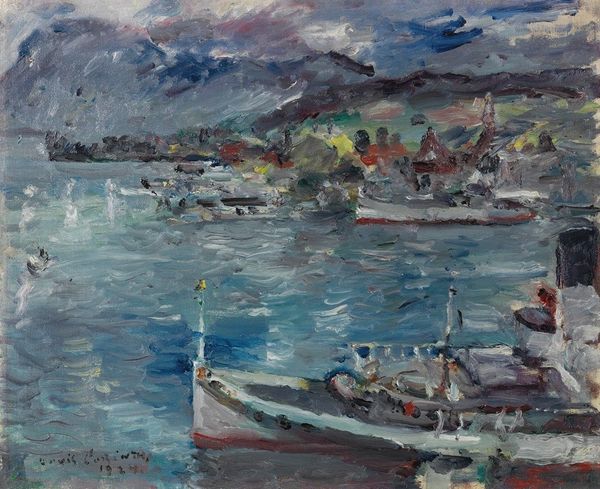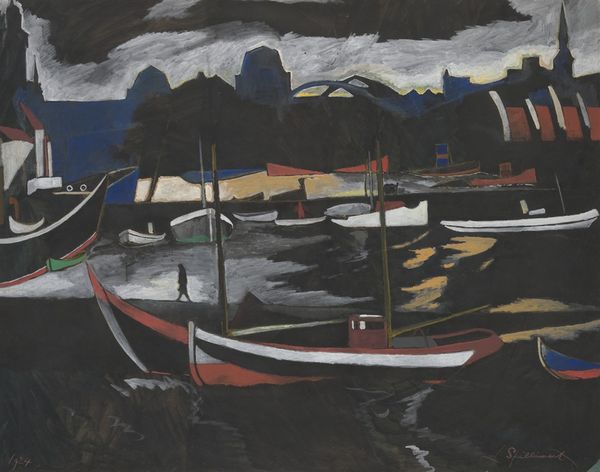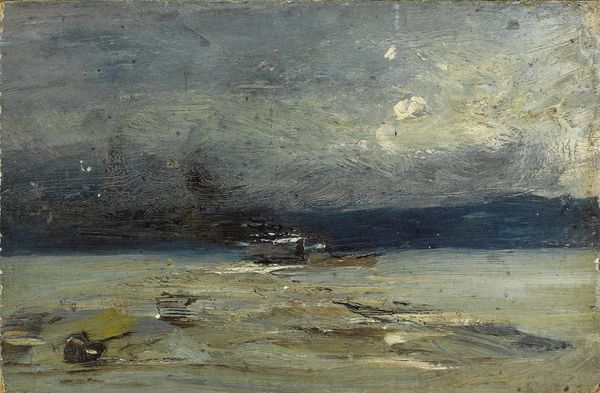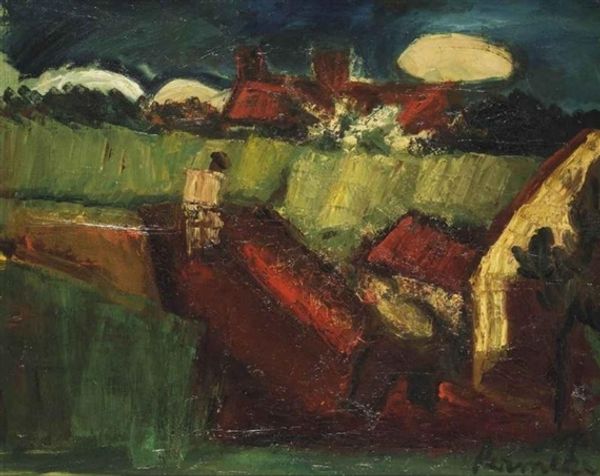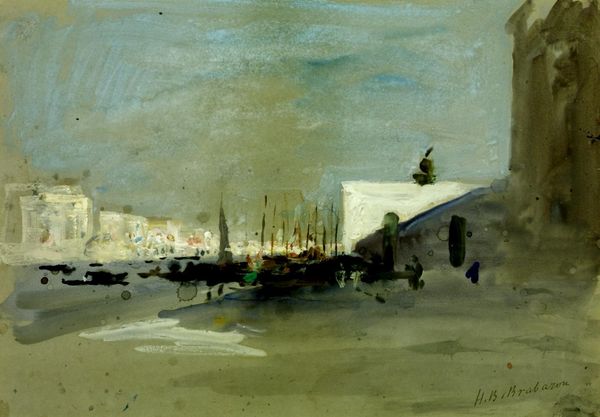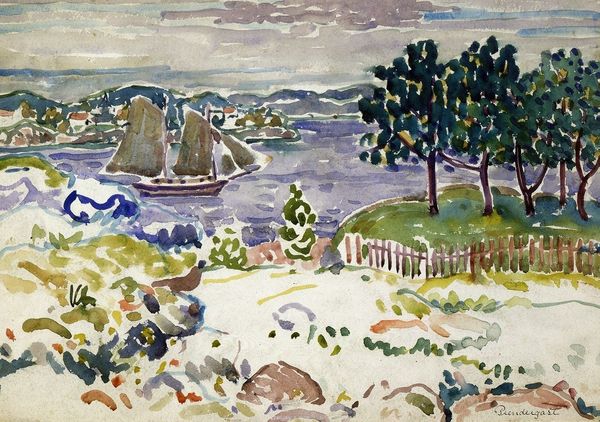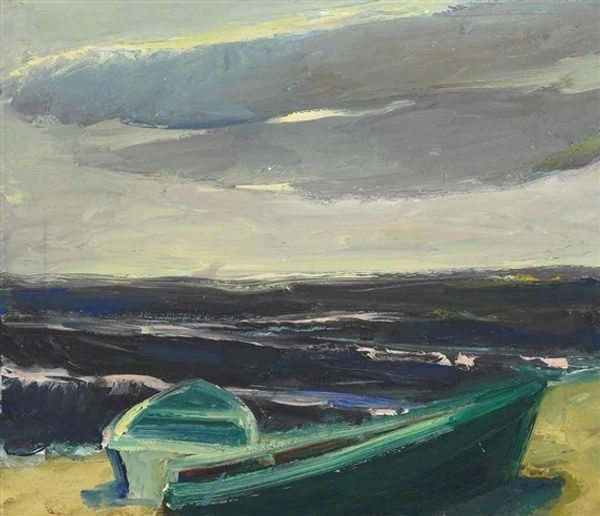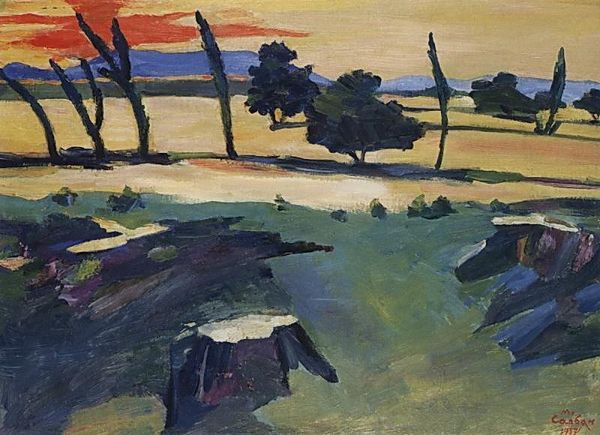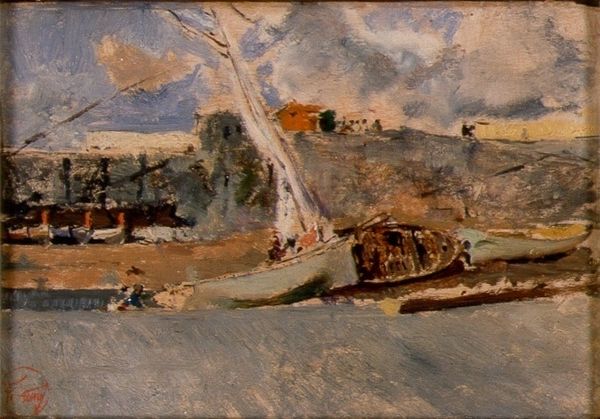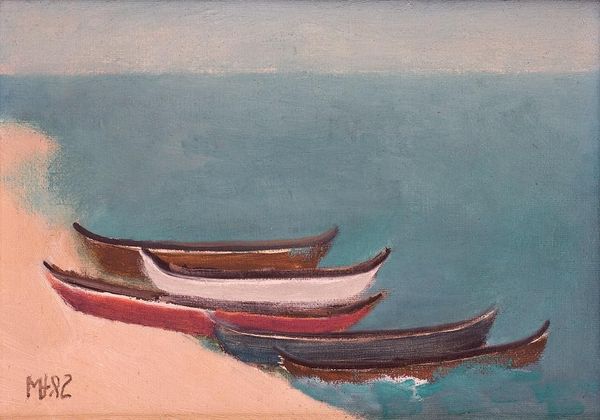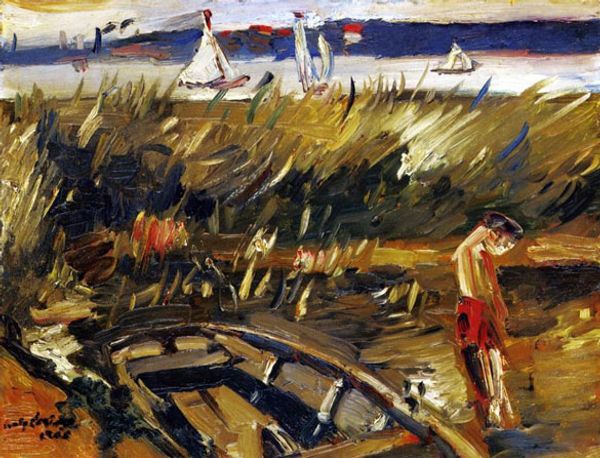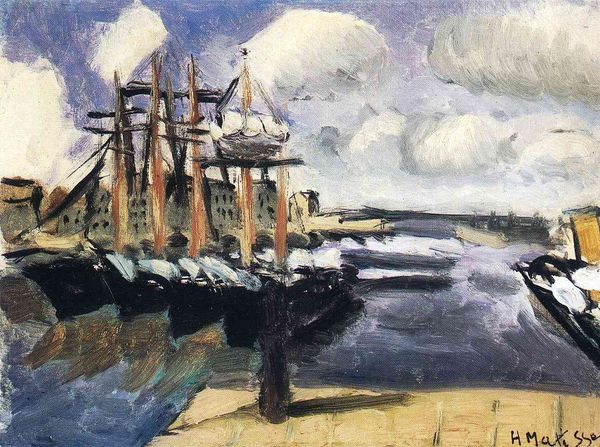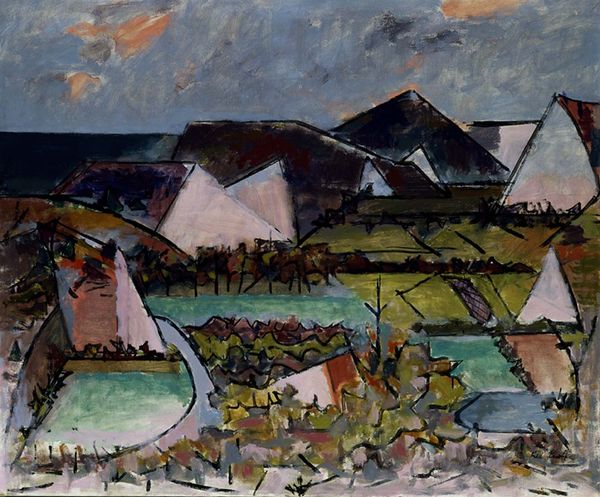
Copyright: Public domain US
Curator: Henri Matisse's "Boats on the Beach, Etrétat," painted in 1920 using oil on canvas, depicts a seemingly quiet coastal scene. What are your initial impressions? Editor: Bleak, but energetic. The muted color palette—gray sky, muted greens and blues—feels almost oppressive. But the application of the paint is quite frenetic and saves the image from being somber. It seems he built the image through the force of texture. Curator: Exactly, and look closely. We see evidence of the materiality—the thick impasto application of oil paint suggests a physical engagement with the subject. Consider the boats: were these simple recreational vessels or a vital part of the local economy? Perhaps painting scenes like this were Matisse’s commentary on the lives of the workers tied to these ships? Editor: I'm more struck by the formal composition here. The balance between the horizontal mass of the beach and the upward thrust of the cliffs is very carefully considered. Also, Matisse is clearly interested in rendering forms, in space. Notice how the masts and rigging create a linear network. Curator: So you’re focused on pictorial relationships, while I tend to think about who exactly built the boats and for what purpose! The rough application hints at manual labor, at something less than refined bourgeois consumption. Editor: Perhaps both are true, Curator. The flattened space is interesting. While it suggests depth, the thick impasto seems to push everything to the surface, challenging our notions of perspective. It could be read, either as very direct translation of lived reality, or as an attempt at simplification, the distillation of form... Curator: I think in this case it's important to investigate the tradition of boat-building. As well as harbor management. And to investigate the status of art labor versus craft labor at the time... Editor: Well, thinking of art in terms of design relationships brings a richer interpretation to its forms... Curator: And considering how art functions within capitalist systems helps us see more clearly what’s been made. Editor: It seems we agree on the evocative power of this painting, though from very different perspectives. Curator: Absolutely. There's always more to see, if you simply follow where the materials and the labor lead you.
Comments
No comments
Be the first to comment and join the conversation on the ultimate creative platform.
